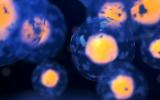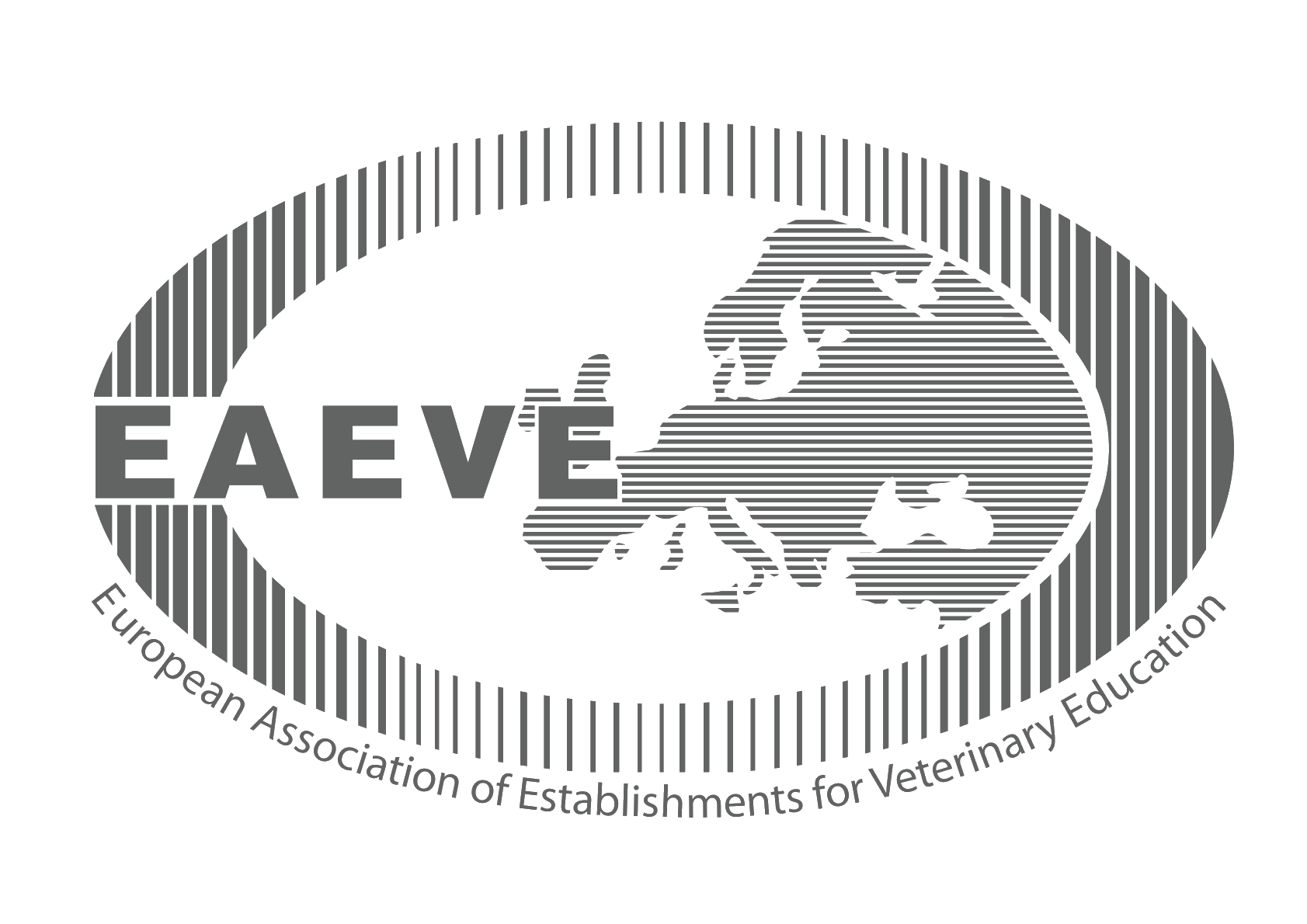
Year 1
Overview
The emphasis is on basic subjects such as anatomy, biochemistry, genetics, and cell and tissue structure, however, students also learn about breeding, nutrition, and animal breeds. They learn about animal husbandry methods during field exercises.
Mandatory Subjects
L – Lectures
S – Seminars
P – Practical Work
CP – Clinical Practice
OFS – Other forms of study
OW – Own Work
ΣCH – Contact Hours
ECTS – European Credit Transfer System
Fall Semester
Subject |
Supervisor |
L |
S |
P |
CP |
OFS |
OW |
ΣCH |
ECTS |
| Cell Biology | Milka Vrecl Fazarinc | 33 | 15 LAB | 72 | 120 | 4 | |||
| Anatomy of Domestic Animals | Gregor Fazarinc | 60 |
15 LAB 75 PSC |
150 | 300 | 10 | |||
| Biochemistry 1 | Petra Zrimšek | 65 |
34 LAB |
51 | 150 | 5 | |||
| Animal Hygiene, Physiology of Nutrition and Environmental Management |
Štefan Pintarič, Breda Jakovac Strajn |
65 | 5 |
32 LAB 4 PSC |
10 TPT | 94 | 210 | 7 | |
| Elective course 1 | 3 |
LAB - Laboratory Practice (up to 18 students in a group) LAB* - Laboratory Practice (up to 9 students in a group); SP - Seminar Practical Work (up to 30 students in a group); TPT - Terrain Practical Training (generally one group); PSC - Practical Work in Special Circumstances (up to 7 students in a group)
Spring Semester
Subject |
Supervisor |
L |
S |
P |
CP |
OFS |
OW |
ΣCH |
ECTS |
| Anatomy of Domestic Animals | Gregor Fazarinc | 45 |
30 LAB 60 LAB* |
75 | 210 | 7 | |||
| Biochemistry 1 | Petra Zrimšek | 40 |
15 LAB |
35 | 90 | 3 | |||
| Fodder, Poisonous and Medicinal Plants | Klemen Eler | 15 | 15 LAB | 10 TPT | 50 | 90 | 3 | ||
| Histology with Embryology 1 | Milka Vrecl Fazarinc | 30 | 30 LAB | 90 | 150 | 5 | |||
| Genetics |
Jelka Zabavnik Piano |
45 | 5 | 10 LAB | 60 | 120 | 4 | ||
| Animal Production | Peter Dovč | 49 |
6 SP 30 LAB |
10 TPT | 85 | 180 | 6 | ||
| Elective course 2 | 3 |
LAB - Laboratory Practice (up to 18 students in a group) LAB* - Laboratory Practice (up to 9 students in a group); SP - Seminar Practical Work (up to 30 students in a group); TPT - Terrain Practical Training (generally one group); PSC - Practical Work in Special Circumstances (up to 7 students in a group)
Supervisor: Milka Vrecl Fazarinc
An introduction to the structure, function and molecular organisation of cells with an emphasis on eukaryotic animal cells, their ultrastructural features and the relationship between structure and function.
Supervisor: Gregor Fazarinc
Knowledge of the structure of organ systems and organs, the interrelationships of different anatomical structures on particular parts of the body, and the mutual comparison of the structure of organ systems in different animal species. The emphasis is placed on the anatomy of domestic mammals (horses, ruminants, carnivores, pigs, rabbits) and domestic birds (hens).
Supervisor: Petra Zrimšek
The subject provides knowledge of basic physical and chemical laws and reactions that apply to living organisms, just like inanimate nature. It presents the basic biomolecules, their interactions in metabolism processes and other biochemical processes in living organisms, and the regulatory mechanisms of these processes. Basic experimental methods used for research or analytical purposes are also covered.
Supervisor: Štefan Pintarič, Breda Jakovac Strajn
Understanding the role of animal hygiene and dietary physiology in sustainable animal husbandry; presentation of the basic physiological and ethological needs of farm animals, the impacts of various livestock technologies on the environment, the production, use and handling of animal by-products and the possibilities for proper management and sustainable environmental management; basic knowledge of animal nutrition, feed, properties and quality of feeds, compound feed and feed additives, the nutritional needs of individual species and categories of animals.
Presentation of the basics of ethics and new trends in animal welfare and the importance of the role of the human/animal relationship.
Supervisor: Klemen Eler
Understanding the biological essence of plants and their structure at cellular and material levels; the common and different properties of plants, fungi and animals at cellular and higher levels and the interdependence of organisms; the basics of determining feed value, health and toxicity; plants as a source of food for herbivores; learning about the most important groups of fodder, poisonous and medicinal plants in Slovenia.
Supervisor: Milka Vrecl Fazarinc
The subject examines the structure and function of cells and the development, structure and functional importance of tissues at the level of light and electron microscopy.
Supervisor: Jelka Zabavnik Piano
Knowledge of hereditary material and inheritance, the origins of mutations and the variability of organisms. This is the basis for understanding physiology and pathology, the relationship between host and parasite, the evolution of subjects and populations, and the inheritance of economic traits and selection. The course also covers the basics of molecular and recombinant genetics methods used in the diagnosis of hereditary and some infectious animal diseases.
Supervisor: Peter Dovč
Acquaintance with the basics on which work in animal husbandry is based. Familiarity with some practical problems in animal husbandry; animal selection, the most important breeds of domestic animals, animal breeding systems, and the basics of animal husbandry economics.
Elective Subjects of Year 1 and 2
L – Lectures
S – Seminars
P – Practical Work
CP – Clinical Practice
OFS – Other forms of study
OW – Own Work
ΣCH – Contact Hours
ECTS – European Credit Transfer System
Fall Semester
Subject |
Supervisor |
L |
S |
P |
CP |
OFS |
OW |
ΣCH |
ECTS |
| English | Andreja Drašler | 45 FL | 45 | 90 | 3 | ||||
| Veterinary Informatics | Miha Mraz | 30 |
15 LAB |
45 | 90 | 3 | |||
| Biophysical Principles of Clinical Diagnostic Methods | Jure Derganc | 15 | 15 |
15 LAB |
45 | 90 | 3 | ||
| Alternative sustainable protein sources in food and feed 1 | Breda Jakovac Strajn | 10 | 20 | 60 | 90 | 3 | |||
| COD - external elective course | 3 |
1 The course is available in 1st, 2nd, 3rd and 4th year
LAB - Laboratory Practice (up to 18 students in a group); FL - Foreign Language (up to 30 students in a group)
Spring Semester
Subject |
Supervisor |
L |
S |
P |
CP |
OFS |
OW |
ΣCH |
ECTS |
| Veterinary Medical Terminology | Jelena Isak Kres | 30 | 60 | 90 | 3 | ||||
| History of Veterinary Medicine | Andrej Pengov | 30 |
|
60 | 90 | 3 | |||
| Communication Skills in Veterinary Medicine 1 | Metka Kuhar | 15 | 30 |
|
45 | 90 | 3 | ||
| The Methodology of Scientific Research | Jelka Zabavnik Piano | 15 | 15 | 60 | 90 | 3 | |||
| COD - external elective course |
It is only possible to enrol in each elective subject once during study. With the prior consent of the Commission for Study and Student Affairs, students can achieve 5% of the credit points of the programme through external election of general elective courses and compulsory general courses in programmes at the University of Ljubljana or other universities in Slovenia.
Following completion of enrolment and based on a student’s written and substantiated explanation, the vice-dean for the pedagogical field can approve a change of the elective subject up to 20 October and inform the Commission for Study and Student Affairs. Subsequent changes of elective subjects are no longer possible.
With the prior consent of the Commission for Study and Student Affairs or the coordinator for international activities, students may transfer part of the study programme from any programme of study of veterinary medicine at a veterinary educational institution listed in the list of verified institutions EAEVE (European Association of Establishments for Veterinary Education).
Supervisor: Zorka Jakoš
Analysis and interpretation of selected professional texts in the field of veterinary medicine and medicine.
Supervisor:
Supervisor: Miha Mraz
Acquaintance with the theoretical basics, and particularly practical knowledge, of the use of modern information technology in the field of veterinary medicine; acquaintance with computers and networks, the most widespread and widely used computer programmes and their use, databases and information systems, electronic information resources in the field of veterinary medicine.
Supervisor: Jelena Isak Kres
In this subject, students of veterinary medicine learn the basics of Latin, the most common groups of Latin and Greek words that are used in veterinary and human medicine, and how to correctly use professional terminology and derivates. Through selected examples, students see how Slovene medical terms are formed, and in some words, what their etymology is.
To this end, students get a theoretical basis for the correct use of technical terms, which ensures uniformity and unambiguity in international naming. The knowledge acquired is important for understanding the terminology in veterinary medicine and for general knowledge.
- pronunciation and accent in Latin
- nouns of all five declensions (recognition of forms based on suffixes, active formation of the generative)
- the verb esse and the active forms of the verbs of all four conjugations in the present
- present and perfect participle
- creation and ‘Sloveneisation’ of medical terms and word order
- etymology of medical terms
- Greek script and the most common Greek words for diseases
Supervisor: Andrej Pengov
Familiarity with the varied history of animal husbandry from prehistoric times to the present day.
Supervisor: Metka Kuhar
Familiarity with some of the theoretical basics of communicology, mainly in terms of a practical approach to communication between veterinarians and clients, the media and senior veterinary institutions.
In recent years, an ever-increasing amount of research shows the exceptional importance of mastering communication skills in veterinary practice, which are often placed alongside clinical skills. In this subject, students have the opportunity to learn the key features of effective and satisfactory communication with clients (e.g. making contact, active listening, empathic attitude, etc.), including optimal structuring of veterinary consultations and insight into the communication aspect of specific situations that are a particular challenge (euthanasia, emergencies, reporting one’s own mistakes, resolving conflict situations, etc.). Communication characteristics in the context of social trends are covered, such as changing the relationship between humans and animals and changing the nature of the doctor/veterinarian-client relationship. A large part of the course is of a practical, experiential nature and includes work in pairs and small groups, role plays, viewing recordings of veterinary consultations, presentations of professional papers on the subject of the course, etc. The subject requires ongoing active participation and, in addition, the assessment consists of a final exam or research project (optional/of students’ choice).
Supervisor: Jelka Zabavnik Piano
Knowledge of science as a dynamic system of verified, socially relevant, generally valid information about nature, humankind and society, and studying the relationship between science and the profession. The specific competencies that students develop in this subject are knowledge of the characteristics of scientific research work and the use of knowledge from this subject to critically read professional and scientific literature, how to write professional articles, plan and produce research work and present the results of their work.
The introductory lecture is followed by work in the form of workshops, discussions and individual work. Students will learn to search for relevant literature, critically evaluate it, find research problems, prepare a research plan and conduct research. The results of the research will be presented in written and oral form. The acquired knowledge is useful for study and learning and the preparation of seminar and research assignments. This encourages lifelong education and the acquisition of knowledge from experientially acquired sources in carrying out professional work.
Supervisor: Jure Derganc
With the development of technology, modern diagnostic methods have become accessible to everyone and are an indispensable tool in treatment at any veterinary practice. The better veterinarians understand the workings of these methods, the better they can treat their patients using them. In the subject Biophysical Bases of Clinical Diagnostic Methods some basic physical laws on which modern diagnostic methods are based are explained, and more is learnt about the basic principles of ultrasound, X-ray, CT, magnetic resonance, ECG, pulse oximetry, blood pressure measurements, and more.
Glavna navigacija
- Informativni dan
- Why to become a veterinarian?
- Undergraduate Studies
- Postgraduate studies
- Pripravništvo
- Summer Schools
- Continuous education
- Professional Development
- International Activity
- Mednarodna dejavnost - Tuji študentje
- The Path to Creative Knowledge
- Tutoring
- Extracurricular Activities
- Career Centres
- Alumni
- Student organizations and societies
- Quality Assurance
Location
Gerbičeva 60
SI-1000 Ljubljana
Slovenija
Sample Reception
Samples are received at several locations throughout Slovenia. See where.
The veterinarian on duty
Emergency veterinary assistance for dogs and cats and a telephone number of constant readiness.
Library
A wide selection of domestic and foreign professional literature in the field of veterinary medicine and other sciences.
Main navigation
-
Education
- Informativni dan
- Why to become a veterinarian?
- Undergraduate Studies
- Postgraduate studies
- Pripravništvo
- Summer Schools
- Continuous education
- Professional Development
- International Activity
- Mednarodna dejavnost - Tuji študentje
- The Path to Creative Knowledge
- Tutoring
- Extracurricular Activities
- Career Centres
- Alumni
- Student organizations and societies
- Quality Assurance
- Clinics
- Diagnostics
- Dobrobit
- NVI
- Research
- About us
- Hub



